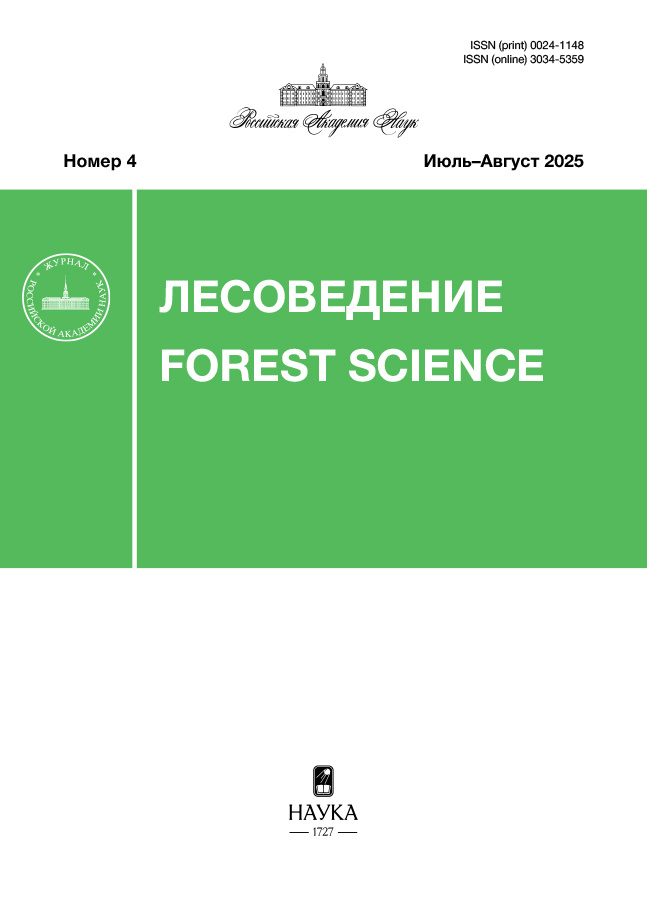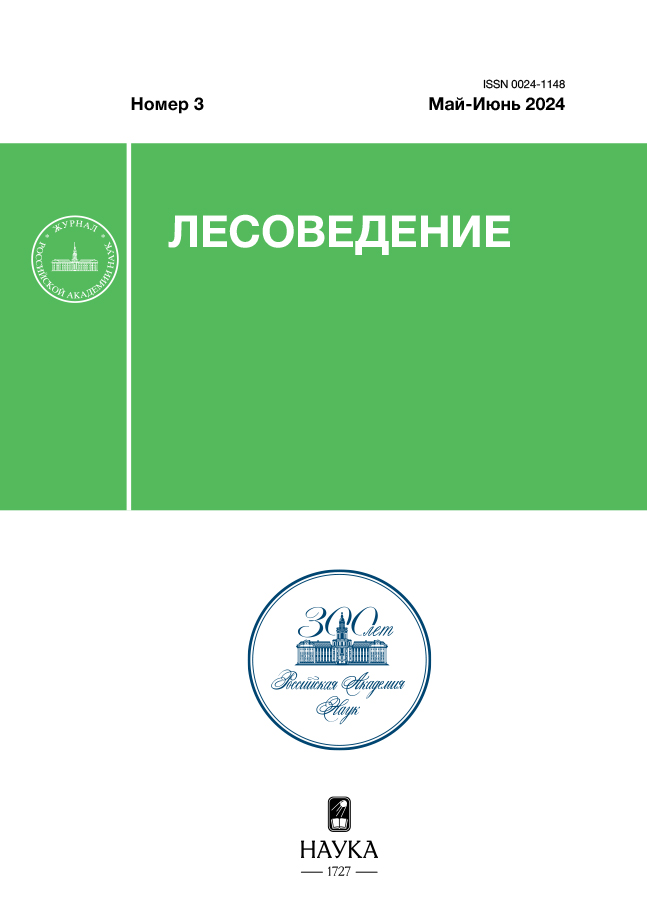Флора лесополос с березой повислой в окрестностях города Уфы
- Авторы: Ишбирдина Л.М.1, Тимерьянов А.Ш.1, Одинцов Г.Е.1, Габитова А.А.1
-
Учреждения:
- Башкирский государственный аграрный университет
- Выпуск: № 3 (2024)
- Страницы: 265-274
- Раздел: ОРИГИНАЛЬНЫЕ СТАТЬИ
- URL: https://transsyst.ru/0024-1148/article/view/681315
- DOI: https://doi.org/10.31857/S0024114824030054
- EDN: https://elibrary.ru/PECVEP
- ID: 681315
Цитировать
Полный текст
Аннотация
В работе приводятся результаты исследования флоры полезащитных лесных полос, созданных из березы повислой (Betula pendula Roth), березы повислой и липы сердцевидной (Tilia cordata Mill.), березы повислой и яблони лесной (Malus sylvestris Mill.), березы повислой и сосны обыкновенной (Pinus sylvestris L.), березы повислой и тополя бальзамического (Populus balsamifera L.) в окрестностях г. Уфы. Выявлено большое видовое разнообразие флоры лесополос с березой повислой, значительно превышающее видовое разнообразие лесополос с тополем бальзамическим этой же зоны исследования. Ведущими семействами во флоре лесополос с березой повислой являются Сложноцветные (Asteraceae), Шиповниковые (Rosaceae), Бобовые (Fabaceae), Сельдерейные (Apiaceae), Мятликовые (Poaceae). Также хорошо представлены «рудеральные» и «полурудеральные» семейства: Капустные (Brassicaceae), Гвоздиковые (Caryophyllaceae), Яснотковые (Lamiaceae). Во флоре лесополос преобладают луговые, лугово-рудеральные виды и виды широколиственных лесов и их опушек. При этом в более старых, разреженных и более высоких лесополосах с увеличением количества света возрастает количество луговых и рудеральных видов. При условии низкой антропогенной нагрузки с возрастом лесополос увеличивается участие видов широколиственных лесов и их синантропизированных вариантов. Также установлено преобладание видов широкого спектра гемеробии — олиго-мезо-β-эугемеробов, но при осветлении древесного полога доминирование переходит к видам, более устойчивым к антропогенному влиянию, — мезо-эугемеробам. При высоких антропогенных нагрузках возрастает участие эугемеробов. В лесополосах из чистых березовых насаждений, березы и липы, березы и яблони обнаружен подрост и ювенильные экземпляры березы повислой. Нет возобновления березы в лесополосах с березой и тополем бальзамическим.
Ключевые слова
Полный текст
Об авторах
Л. М. Ишбирдина
Башкирский государственный аграрный университет
Автор, ответственный за переписку.
Email: butomus11@yandex.ru
Россия, 450001, Уфа, Республика Башкортостан, ул. 50-летия Октября, д. 34
А. Ш. Тимерьянов
Башкирский государственный аграрный университет
Email: butomus11@yandex.ru
Россия, 450001, Уфа, Республика Башкортостан, ул. 50-летия Октября, д. 34
Г. Е. Одинцов
Башкирский государственный аграрный университет
Email: butomus11@yandex.ru
Россия, 450001, Уфа, Республика Башкортостан, ул. 50-летия Октября, д. 34
А. А. Габитова
Башкирский государственный аграрный университет
Email: butomus11@yandex.ru
Россия, 450001, Уфа, Республика Башкортостан, ул. 50-летия Октября, д. 34
Список литературы
- Ишбирдина Л. М., Тимерьянов А. Ш., Одинцов Г. Е. Флора лесополос с тополем бальзамическим (Populus balsamifera L.) в окрестностях города Уфы // Труды Санкт-Петербургского научно-исследовательского института лесного хозяйства. 2019. № 2. С. 4—22.
- Кадильников И. П. Физико-географическое районирование Башкирской АССР. Уфа: Башкирский гос. ун-т, 1964. 210 с.
- Крашенинников И. М., Кучеровская-Рожанец С. Е. Природные ресурсы Башкирской АССР: в 3 т. Т. 1: Растительность Башкирской АССР. Л.: Изд-во АН СССР, 1941. 155 с.
- Методы изучения лесных сообществ / под ред. В. Т. Ярмишко, И. В. Лянгузовой. СПб.: НИИ химии СПбГУ, 2002. 240 с.
- ОСТ 56-69-83. Площади пробные лесоустроительные. Метод закладки. М.: ЦБНТИ Гослесхоза СССР, 1983. 60 с.
- Черепанов С. К. Сосудистые растения России и сопредельных государств (в пределах бывшего СССР). СПб.: Мир и семья-95, 1995. 990 с.
- Frank D., Klotz S., Klotz S. Biologisch-öekologische Daten zur Flora der DDR. Halle (Saale), 1990. 167 p.
- Klotz S. Die ruderalgesselschaften eines neubaugebietes — ihre verbeitung und kombination // Acta Bot. Slov. Acad. Sci. Slovacae. 1984. № 1. P. 111—125.
- Kunick D. Zonietung des Stadtgebietes von Berlin (West). Ergebnisse Floristischer Untersuchung // Gen. Schriftenr. d.Fachber. Landschaftsentwicklung u.Umweltforsch. 1982. № 14. P. 1—164.
- Raunkiær C. The life forms of plant and statistical plant geography. Oxford: Clarendon Press, 1934. 632 p.
Дополнительные файлы















